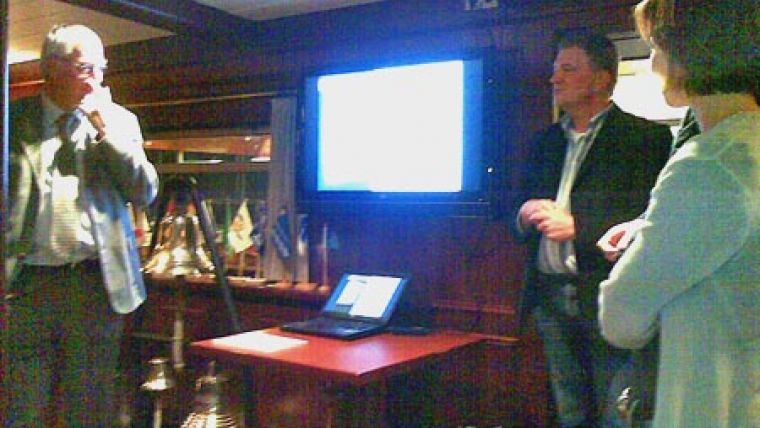HSB and Different Techniques
On 29 September the Hydrographic Society Benelux held its autumn workshop in Dordrecht. The theme of the workshop was ‘hydrographic and geophysical techniques' and three speakers discussed the progress in this field from different angles.
First Mirjam Snellen from Delft University presented the research in the acoustical remote sensing group of the university. A method was presented for sediment classification using multibeam echo sounders and the results from four different areas were shown. The method is able to differentiate between a number of sediment types, that match very well with ground truths. The method is robust to cope quite different areas, like the Cleaver Bank North Sea, Oosterscheldt area, the river Waal and a coastal area.
The final goal is to obtain an absolute classification of sediment parameters from echo sounder data.
Second speaker was Robert Girault from the IXSEA development centre in La Ciotat, France. He discussed the principles of the SHADOWS system, a synthetic aperture side-scan sonar (SAS). The advantages of SAS are a better signal-to-noise ratio, a higher resolution and a range independent footprint. Effectively the length of the transducer is increased synthetically. To do this a very accurate positioning is needed. High-end INS technology is used in SHADOWS in combination with massive computing.
Finally Ronald Koomans from Medusa Exploration placed the technology (radiometric sediment classification) in the context of a recent Dutch policy report on the measures, needed to handle climate change. He gave three examples:
- For effective sand suppletions on the coast the distribution of grain sizes in the coastal zone can be measured.
- The influx of fine sand in the Wadden Sea should be monitored to protect the valuable ecosystem.
- The effect of high river discharges on dunes in the river bed and the sediment distribution can be researched.
The lively discussion after the three presentations proved, that the topic generates a large amount of interest in the audience.
As usual the social aspects of the workshop were not neglected during the dinner before and the drinks after the technical presentations.














